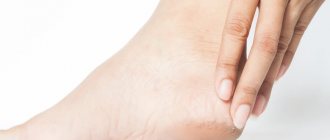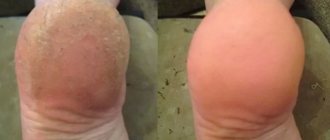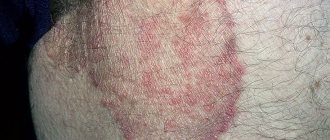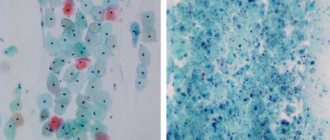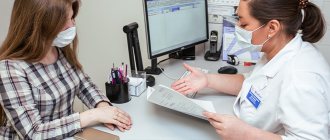Calluses
occur in places where the skin experiences constant friction or pressure. By forming a callus, the body tries to protect itself from this adverse effect.
First there is a wet callus
- a bladder filled with liquid - lymph. Lymph is needed for the speedy healing of damaged tissues. If the mechanical irritation stops, new skin forms under the blister and the callus disappears.
If the external influence continues, the body begins to build up a protective layer of dead, horny cells. Dry callus appears
, looking like a white-yellow compaction, usually with round outlines.
Calluses form on the hands (during physical work) and on the feet (on the heels or toes). As a rule, it is foot calluses that worry us.
What is a callus
A callus is a conical thickening of the skin that occurs in areas of constant friction or pressure. Most often, calluses appear on the feet (heel, big toe, side of the foot) and on the hands. In men, a callus may appear on the penis due to frequent wearing of too tight underwear.
The main symptom of the appearance of callous formations is the formation of tubercles of rough skin. Depending on the location and appearance, there are several types of calluses:
- dry;
- wet;
- bone.
A dry callus is a small area of thickened, dead skin that is yellowish in color. A wet callus has a thinner surface and is often filled with lymphatic fluid. Callus occurs during the process of bone regeneration after fractures. Separately, bloody calluses, core calluses, and calluses are also distinguished.
Core (root) callus is a type of dry callus and is distinguished by the presence of a thickened keratin core. The external manifestation of a root callus is similar to that of a plantar wart, so a dermatologist can make an accurate diagnosis after performing a dermatoscopy.
Calluses (corns) are wide, flat thickenings of the skin that do not have a hard center. Corns on the feet and hands rarely cause pain when pressed.
A callus with blood is a type of wet callus filled not only with lymph, but also with blood. A callus occurs when blood vessels are too close to the surface of the skin that has been subjected to friction.
Treatment of calluses, basic methods
You can get rid of roughening (callus) of the skin in different ways. Treatment for calluses depends on their type and severity. In the arsenal of doctors are:
- therapy with medications that “dissolve” skin roughness;
- anti-callus patches;
- surgical removal (excision);
- The most modern method is laser removal of calluses.
Removing calluses using surgical instruments is performed not only by surgeons, but also by podiatrists - specialized specialists who deal exclusively with the feet.
Causes of calluses
In response to constant friction and pressure, cells begin to synthesize increased amounts of keratin, the skin's protective protein. With calluses, keratin can form a plug in the deep layers of the skin. The main reasons for the formation of calluses on the feet and hands are:
- wearing shoes of the wrong size;
- foot deformities (hammer toes, bunions, bone spurs);
- chafing of the skin due to professional activities (musicians, weightlifters, artisans);
In tight shoes, the skin of the foot is strongly compressed, and in too loose shoes, it slips and rubs, which can cause internal (core) calluses to develop. Calluses on the foot due to toe deformities occur due to improper weight distribution. Due to frequent rubbing of the skin of the hands with professional instruments (strings, bars), calluses appear on the hands.
How to choose the right ointment against calluses?
In home treatment, the drug is selected taking into account the type of callosal defect:
- Ointments with a moisturizing, softening, and keratolytic effect will help with corns and dry calluses. Therapeutic agents enhance desquamation - exfoliation of dead skin flakes, activate blood microcirculation, and soften damaged areas.
- For shallow core calluses, keratolytic preparations are used to loosen the keratinized epidermis, and local anesthetics to eliminate pain.
- For water calluses, burst blisters, and areas worn down to the flesh, use antibacterial anti-inflammatory drugs that have a drying and wound-healing effect. And also, reparants and regenerants for skin restoration.
For bloody calluses resulting from tissue compression, treatment with antiseptics is necessary. An infection easily penetrates into a burst blood callus, which can lead to suppuration, inflammation of the lymph nodes, and sepsis (blood poisoning).
Benefits of ointment treatment:
- accessibility (you don’t need a doctor’s prescription to purchase the product);
- therapeutic effect to accelerate the healing of the epidermis;
- wide choice of directional action;
- acceptable price category.
Important!
Medicines for external use do not have direct contact with the digestive organs, which significantly reduces the list of contraindications for their use. When self-treating with topical drugs, you must:
- follow the instructions for use;
- before use, perform an allergy test on the inner bend of the elbow joint;
- After opening the package, store the ointment in the refrigerator.
Dry and wet calluses
Dry calluses are keratinized areas of skin that form in places where bone presses on the skin of the feet (tops of the toes). If you frequently wear tight shoes, dry subungual callus may form.
Wet (water) calluses are whitish-gray in color and have a softer texture because they form in areas of increased sweating on the feet and hands. Water calluses often form between the fingers and toes. If a wet callus on the foot is damaged, an infection can enter the wound, so it is important to treat the damaged area of skin with antiseptic agents.
How to prevent skin problems in the future
A patch for calluses on the heel and other areas will help speed up recovery and relieve discomfort. But it is easier to prevent the formation of calluses than to treat the consequences. Preventive measures include the following:
- regular pedicure, daily foot hygiene;
- moderate skin hydration;
- wearing comfortable shoes of your size with a hard back and wide toe;
- changing and cleaning shoes several times a season;
- therapeutic exercises, foot massage;
- preventing the risk of microtrauma;
- refusal to wear wet socks and gloves.
The listed preventive measures will reduce the risk of callus formation (wet, dry, core). If trouble cannot be avoided, it is advisable to immediately begin treating the calluses and should not cut them off.
Callus
Callus formation is an important step in the process of bone tissue repair after injury because it helps connect the parts of the damaged bone. After a fracture, the callus is enriched with calcium and gradually turns into normal bone tissue.
Due to insufficient immobilization or poor circulation at the fracture site, callus may form too slowly (delayed fracture consolidation). Its slow formation can cause the bone to heal incorrectly and cause pain.
Doctor callus cream
Product based on salicylic acid and sulfur.
Less significant substances: corn oil, paraffin, petroleum jelly.
The procedure for eliminating calluses begins with a bath.
Soda is added to it.
For 1 liter of water, take 1 tablespoon of sodium bicarbonate.
The foot should be steamed in water for 25 minutes.
Then you need to wipe the skin dry and apply Doctor Callus to the skin.
The product is placed under the patch.
It is worn for 1-2 days.
After removing the bandage, the callus softens and can be easily cleaned off.
Sometimes the procedure has to be done 3-4 times if the callus is very dense or thick.
How to get rid of calluses?
To get rid of calluses, it is enough to temporarily eliminate activities that cause chafing of the skin. You can remove dry calluses manually: you need to steam the skin of your hands and remove rough areas using pumice. In addition, the surgeon may recommend the use of keratolytic agents, which soften the skin. You cannot remove calluses on your own with the help of keratolytics if you have diabetes or pathologies of the immune system, since after removal a wound may form through which an infection can enter the body
You should see a doctor if the callus is painful to step on or touch, as this symptom may indicate the presence of a heel spur, a calcified growth on the surface of the bone. Removal of the callus core is performed by a doctor because removing the callus at home is ineffective and unsafe.
To quickly cure a water callus and avoid its damage, it is necessary to reduce the contact of the inflamed skin with the shoes: you can put a foam insert or a cotton ball between your toes. If the water callus bursts, the doctor prescribes the use of wound healing agents with an antiseptic effect.
Callus removal is performed surgically using local anesthesia. First, the surgeon cuts off the keratin growth on the skin, and then pulls out the rod. To speed up the healing process and prevent the wound from becoming infected, it is recommended to wear a sterile dressing for several days after the callus removal procedure. The surgeon also prescribes local use of antiseptics for two to three weeks after removal of the callus.
How doctors remove calluses
The fastest, safest and most painless method is hardware procedures. Removal of the formation is carried out using a special cosmetology device equipped with an automatic cutter fixation system. This eliminates the risk of soft tissue damage. The procedure itself is painless and does not require special preparation. The session time ranges from 10 to 60 minutes. It depends on the number of dry calluses and the degree of their neglect.
Before starting work and during the procedure, the skin is thoroughly disinfected. In case of increased sensitivity, the patient is given topical anesthesia. When treating calluses and corns, the skin is cooled using a spray.
After removing a callus or corns, the skin is polished, and the edges of the treated area are smoothed so that there is no discomfort when walking later. After completion of the procedure, the treated surface is protected with a bandage.
In this way, you can remove any corns, including dry calluses on the foot.
Features of hardware procedures:
- absolute safety – the surface being treated is thoroughly disinfected, which eliminates the risk of infection;
- speed – unlike home procedures, the removal of corns and calluses in a cosmetology clinic is performed quickly and efficiently. One procedure is enough;
- painlessness – automatic fixation of the cutter on the equipment protects the skin from accidental injury and pain;
- no contraindications – anyone can use hardware callus removal.
Callus or wart?
A wart is a small growth that is caused by the human papillomavirus (HPV). Calluses and warts may be similar in appearance. A wart can be distinguished by its more granular structure and location (warts can appear on any part of the body). To accurately make a diagnosis (callus or wart) and select treatment, the surgeon can conduct a dermoscopic examination and additionally prescribe a test for human papillomavirus (HPV).
The best creams for calluses and corns
For dry calluses, medications in the form of a cream are used. Such compositions are well absorbed, do not leave a greasy sheen and do not stain clothes. The best creams for corns are made on the basis of lactic, benzoic, salicylic acids and emollient natural oils. Their use minimizes complications and allows you to quickly get rid of rough growths on the arms and legs.
SVR Foot Cream Xerial 50 Extreme Creme Pieds
5
★★★★★
editorial assessment
97%
buyers recommend this product
Xerial's formula contains urea, salicylic acid, shea butter and glycerin. The cream has a light texture, so it is evenly distributed and instantly absorbed, leaving the skin smooth and soft.
Active substances exfoliate dead cells, soften rough areas and increase the elasticity of the epidermis. The drug is suitable for eliminating calluses on the feet, palms and elbows. Sold in a 50 ml tube.
Advantages:
- stimulates renewal of the stratum corneum;
- retains moisture in cells;
- suitable for sensitive skin;
- has no smell.
Flaws:
- The tube runs out quickly.
The cream solves many problems of dry skin and is considered a good remedy for the prevention and treatment of corns.
SuperAntimozol
4.9
★★★★★
editorial assessment
96%
buyers recommend this product
The cream contains urea, salicylic, lactic acids and herbal additives that have a bactericidal and softening effect. The cream is designed to eliminate corns and, with regular use, completely eliminates unpleasant formations. Sold in a 75 g tube along with instructions.
Advantages:
- homogeneous composition;
- deep hydration;
- healing of cracks;
- softening callous growths;
- elimination of unpleasant odor.
Flaws:
- does not help with calluses with a core.
SuperAntimozol acts delicately and rarely provokes side effects, therefore it is considered a safe and effective treatment.
Intensive cream Footprim
4.9
★★★★★
editorial assessment
95%
buyers recommend this product
Bulgarian cream Footprim includes natural green tea extract and salicylic acid. Active substances prevent the destruction of collagen, block the appearance of dead cells and stimulate blood circulation. The product destroys bacteria, moisturizes and provides complete care for the skin of the feet. Sold in plastic packaging of 50 ml.
Advantages:
- disinfects;
- softens rough areas;
- increases skin elasticity;
- exfoliates dead cells.
Flaws:
- The minimum course of treatment is 2-4 weeks.
Footprim is a multi-action cream that prevents flaking of the feet and copes with old corns.
EVO with urea
4.8
★★★★★
editorial assessment
92%
buyers recommend this product
The main component of the cream is urea, which prevents dry skin, the appearance of calluses and cracks between the fingers. Additional substances include: extracts of celandine, pine needles, oak bark, olive and coconut oil. The drug stimulates metabolic processes, makes the skin elastic, soft and prevents the development of fungal infections. Comes in a 50 ml tube.
Advantages:
- softens and nourishes the skin;
- eliminates unpleasant odor;
- heals wounds;
- It is used sparingly.
Flaws:
- Individual intolerance to the composition is possible.
EVO cream is recommended for softening rough, cracked feet and eliminating dry calluses.
Nezosol
4.8
★★★★★
editorial assessment
88%
buyers recommend this product
The effectiveness of Nemozol cream is ensured by glycolic acid, sulfur, salicylic acid, glycerin, and castor oil. The composition has a fungicidal, antiseptic, keratolytic effect, therefore it quickly softens calluses, heals abrasions and wounds. Sold in a 5 g plastic jar.
Advantages:
- softens dry calluses;
- renews the skin of the feet and heels;
- protects against fungus;
- inexpensive.
Flaws:
- aggressive composition can cause irritation;
- very small volume.
You need to use this cream carefully. Steam the callus and dry your foot. Make a hole in the patch the size of the corn and fix the callus in the slot. Using a toothpick, apply Nemozol in an even layer and cover with another bandage on top. After 1-2 days, all that remains is to remove the bandage and clean the exfoliated areas with pumice.
Mozolka “Green Street”
4.7
★★★★★
editorial assessment
85%
buyers recommend this product
Mozolka cream-balm is a storehouse of valuable ingredients that have a beneficial effect on skin health. Contains emollient natural oils, amaranth and papaya extracts, salicylic acid and Bacillus enzyme. The composition improves blood circulation, reduces pain, restores the structure of the skin, and makes the legs well-groomed and beautiful. Volume 15 ml.
Advantages:
- many natural ingredients;
- removes discomfort when walking;
- eliminates excessive dryness;
- heals small cracks.
Flaws:
- small tube.
The cream is used 2-3 times a day, gently rubbing into the skin of the feet. There is no need to additionally steam your feet before treatment - you can apply it as is.
READ ALSO
11 Best Creams for Cracked Heels
Hyperkeratosis, dryness and flaking
Hyperkeratosis is a thickening of the stratum corneum. A layer of 1 to 10 mm is formed on the feet. The thickening is aggravated by the appearance of cracks, chronic formation of calluses and corns.
Excess weight, poor hygiene and the use of shoes made of synthetic materials are the main triggers of hyperkeratosis, among other reasons:
- genetic factor;
- age-related changes in the body;
- fungal infection;
- improper care of the skin of the feet;
- disturbances in the functioning of the endocrine system.
You can remove the effects of hyperkeratosis in a beauty salon. The pedicurist uses a combined technique, which includes the use of softeners and hardware treatment.
The maximum effect when removing rough skin is achieved when using cutters with an abrasiveness of 100-280 grit. The master gradually reduces the abrasiveness using different attachments.
Recommendations:
- using comfortable shoes;
- regular foot care with moisturizing creams;
- use of socks and shoes made from natural materials;
- regular visits to the podiatrist.
To combat dryness and flaking of the skin, urea-based products are used. The beauty parlors offer a procedure called cold paraffin therapy. A good effect is achieved by using wax applications and nourishing masks.
It is important not only to eliminate a cosmetic defect, but also to identify the causes of its occurrence and ensure proper prevention. If necessary, the podiatrist will give recommendations and refer you for consultations to specialized specialists to identify the cause of the defect.
1.General information
Calluses are a widespread phenomenon, which in the vast majority of cases does not come to the attention of outpatient or, especially, inpatient surgeons. The exception is rare cases of complications that require surgery and subsequent intensive treatment.
This development of events is mainly due to the fact that “ordinary” calluses are opened at home without observing the basic rules of asepsis and the principles of primary medical self-help. Therefore, it will not be amiss to remember what a skin callus is and what measures need to be taken to eliminate and prevent it.
We emphasize that in this case we are talking only about skin calluses; Bone calluses are a different kind of pathology that should be considered separately.
A must read! Help with treatment and hospitalization!
Corns: features and treatment
Corns resemble calluses, but are irregular in shape, large in size, have jagged edges, and are highly dense. The main means of combating corns is a combined pedicure. Cosmetologists use keratolic agents, which have a softening effect, and devices with attachments of varying degrees of abrasiveness.
The main causes of corns:
- low-quality, uncomfortable shoes;
- foot deformity;
- improper regeneration of the skin of the foot;
- dehydration and strict diets.
The regular appearance of corns, regardless of the shoes used, is a reason to visit an orthopedist.
The main stages of eliminating corns:
- visiting a pedicurist who will file the damaged area. The procedure is performed in several stages;
- daily home care;
- wearing shoes with orthopedic insoles;
- scheduled visit to a podiatrist.
With the help of a hardware pedicure, you can remove a small corn in one session. Large and dense ones are removed gradually, since if a significant area is removed in one procedure, the regeneration process is activated and the corns increase in size.
What is hyperhidrosis
Hyperhidrosis is increased sweating, which leads to the formation of skin pathologies. An area with constant high humidity and a temperature comfortable for the growth of bacteria is created in the foot area. This causes an unpleasant odor and peeling of the skin in large areas.
The main reasons for the development of hyperhidrosis:
- disorders of the thyroid gland;
- wearing uncomfortable shoes with poor ventilation;
- the use of low-quality creams based on synthetic bases that form an airtight film on the surface of the skin.
The main problem with hyperhidrosis is thick and swollen skin. It is difficult to process using hardware methods. To relieve the main symptoms, it is recommended to sprinkle the damaged areas with baby powder or talcum powder.
To treat hyperhidrosis, alcohol-based antiseptic formulations are used. The treatment can be done in a beauty salon. After hygienic treatment, the feet are wiped and treated with talcum powder. Prepared feet are processed using hardware methods using cutters with a hardness of 100-280 grit. After completing the procedure, the master will definitely give recommendations.
General recommendations:
- use a deodorant recommended by a specialist;
- wear shoes and clothes made from natural materials;
- take good care of your shoes;
- Perform regular foot hygiene procedures at least twice a day.
- Pay special attention to the condition of the insoles.

